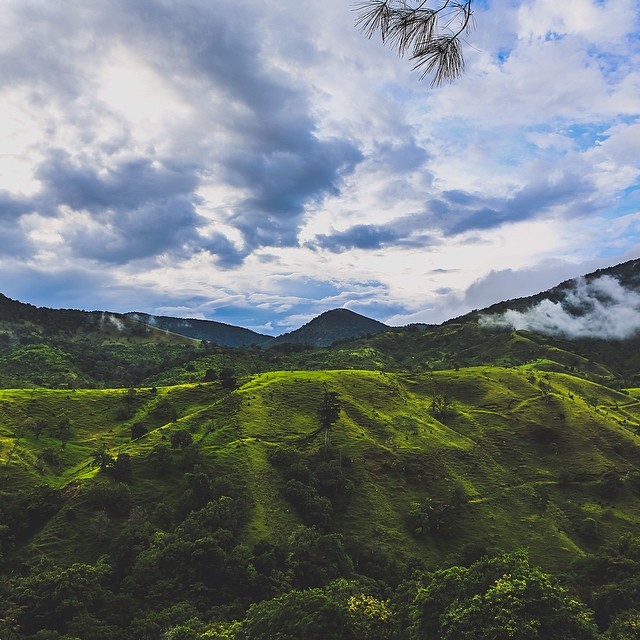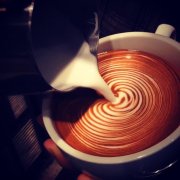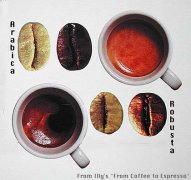How to Brew Espresso Blending and Roasting Grinder Italian Blending Bean
Espresso is a type of coffee with a strong taste by brewing coffee with extremely hot but non-boiling hot water under high pressure and grinding it into a very fine coffee powder. It was invented and developed in Italy and began at the beginning of the 20th century.

Blending and baking
It is impossible to make a good Espresso without a good coffee mix. Coffee must be matched with the sweetness, aroma and lubrication required by Espresso. Coffee beans must be fresh, generally use coffee beans 4-7 days after roasting, which is conducive to the release of excess carbon dioxide from roasted beans, and coffee beans should be freshly ground to maintain freshness. At the same time, the deeply baked beans will taste bitter and scorched, while the Italian concentrated beans will be lightly baked to bring out the sweetness they need.
How to make espresso?
Bean grinder and bean mill
The process of grinding beans should be meticulous, and the thickness of the powder can keep the absorption process between 25-30 seconds. The bean grinder should be selected properly, and the cone shape is better. Cone-shaped grinding plates are more average and have a longer life than flat ones, and coffee is not heated during grinding. If the grinding plate is heated, the coffee will lose its flavor.
Distribution and pressing powder
In the filter handle, before pressing the powder, the coffee powder must be evenly distributed in the filter of the handle. First use 5 pounds of pressure powder once, then press once with 30 pounds of pressure, and then rotate 720 °with 20 pounds of pressure to make the powder surface smooth and smooth.
How to make espresso?
Water temperature and water pressure
The temperature of the water and the stability of the water temperature are very important, and the water temperature must be stable at 92-96 °C. The water pressure passing through the Espresso should be between 9 and 10 atmospheric pressure. This pressure is guaranteed to produce foam.
Absorb time
The absorption time for brewing two 1-ounce cups of Espresso should be between 25 and 30 seconds. In addition to time, if the color of the Espresso starts to fade, you should end the production process. The goal should be to produce a dark red Espresso within 25-30 seconds without changing color.
Important Notice :
前街咖啡 FrontStreet Coffee has moved to new addredd:
FrontStreet Coffee Address: 315,Donghua East Road,GuangZhou
Tel:020 38364473
- Prev

Italian coffee training Italian coffee machine espresso Italian blend beans Coffee beans
Italian coffee is different because it is given a specific meaning when it is formed. Italians like coffee after work, but in order to save time, they need a simple and strong cup of coffee, so they have its representative drink Espresso, which means espresso. It is understood that this Italian coffee is not only fragrant and mellow, but also simple.
- Next

The reason why Italian coffee beans need to be mixed with beans and lattes
Why do Italian coffee beans have to be mixed? Although some fixed varieties of coffee can be drunk directly as individual coffee, most of the coffee has more or less defects in flavor. For example, there is no special flavor, lack of depth, not strong enough, or a certain taste is too strong. In order to make up for these deficiencies, it is necessary to mix several kinds of coffee beans with different characteristics.
Related
- Beginners will see the "Coffee pull flower" guide!
- What is the difference between ice blog purified milk and ordinary milk coffee?
- Why is the Philippines the largest producer of crops in Liberia?
- For coffee extraction, should the fine powder be retained?
- How does extracted espresso fill pressed powder? How much strength does it take to press the powder?
- How to make jasmine cold extract coffee? Is the jasmine + latte good?
- Will this little toy really make the coffee taste better? How does Lily Drip affect coffee extraction?
- Will the action of slapping the filter cup also affect coffee extraction?
- What's the difference between powder-to-water ratio and powder-to-liquid ratio?
- What is the Ethiopian local species? What does it have to do with Heirloom native species?

